Richard and Diane Van Vleck Personal Pages The Home Habitat |
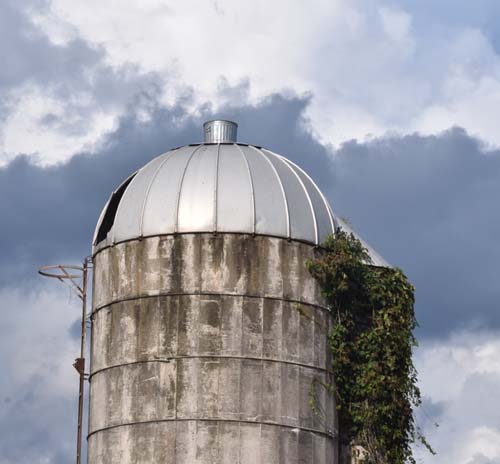

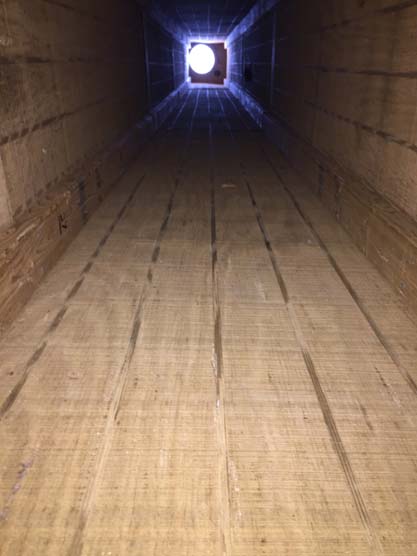
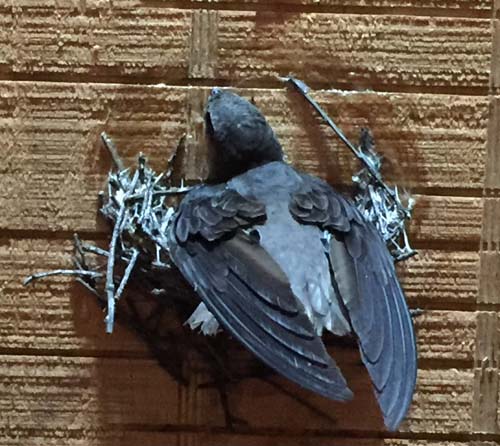



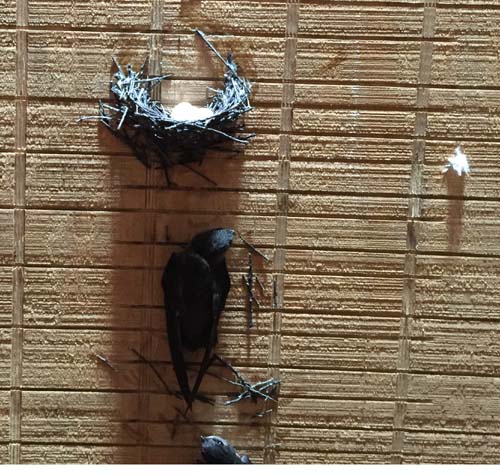


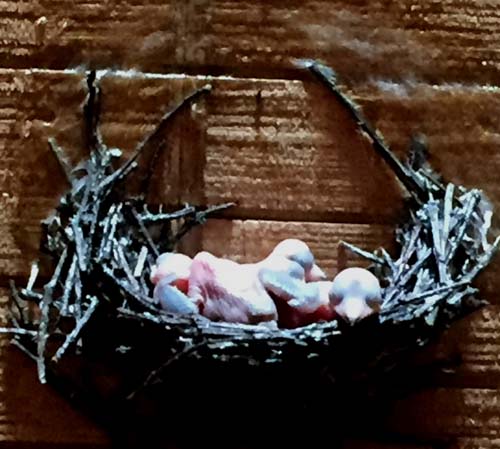
4 day old nestlings are noticeably larger. All nestlings hatched within 48 hours.
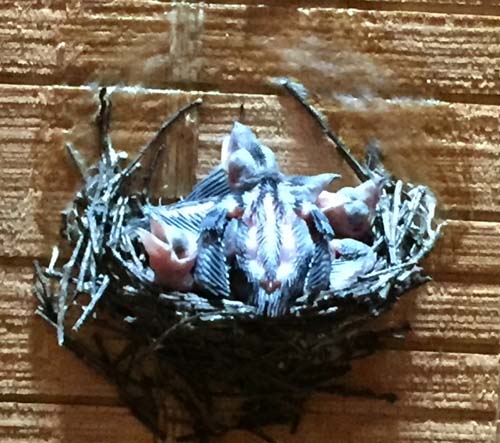

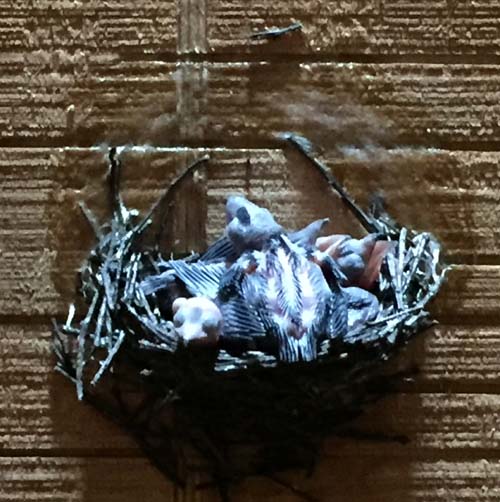
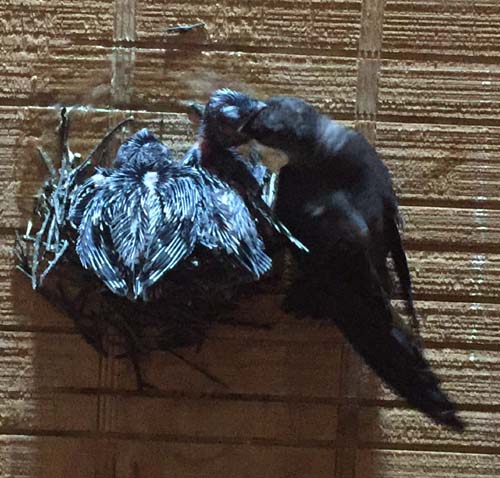
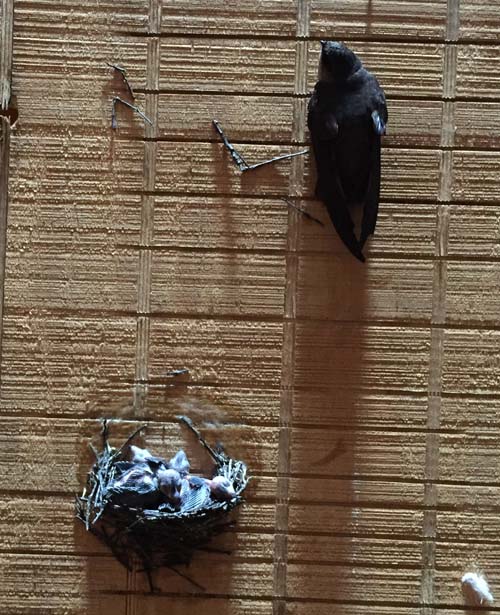
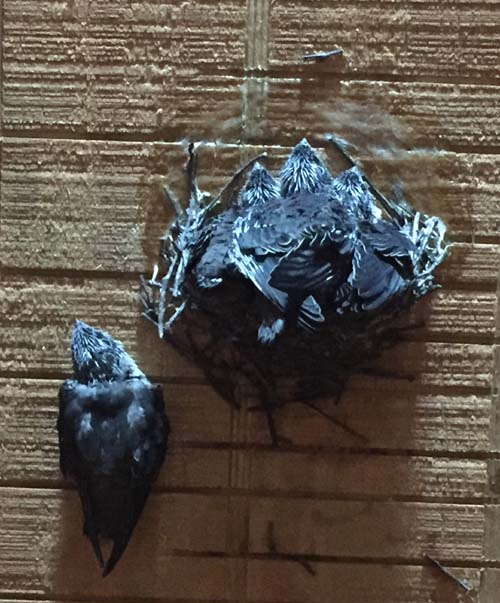
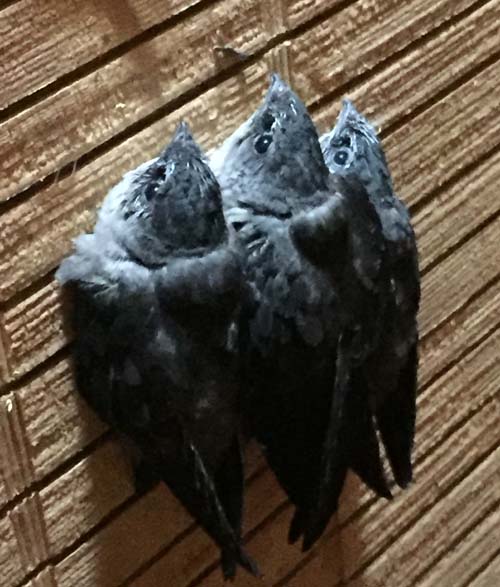
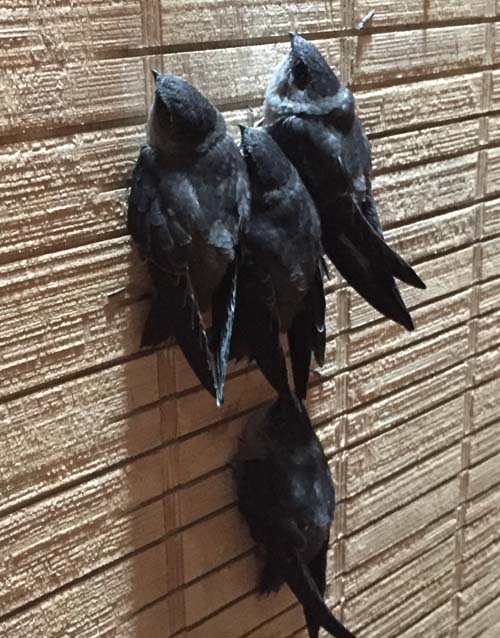
The video links below are of continued nest building during the incubation phase. Several of the videos include an interesting interplay between the two adults and involve some shoving. Acquiring each twig may be the hardest part of the nest building process and a swift returning to the nest with a twig seems to have little patience with its mate not moving over or getting off the nest. Nest building may continue until the eggs hatch.
swift video 1
Swift video 2
swift video 3
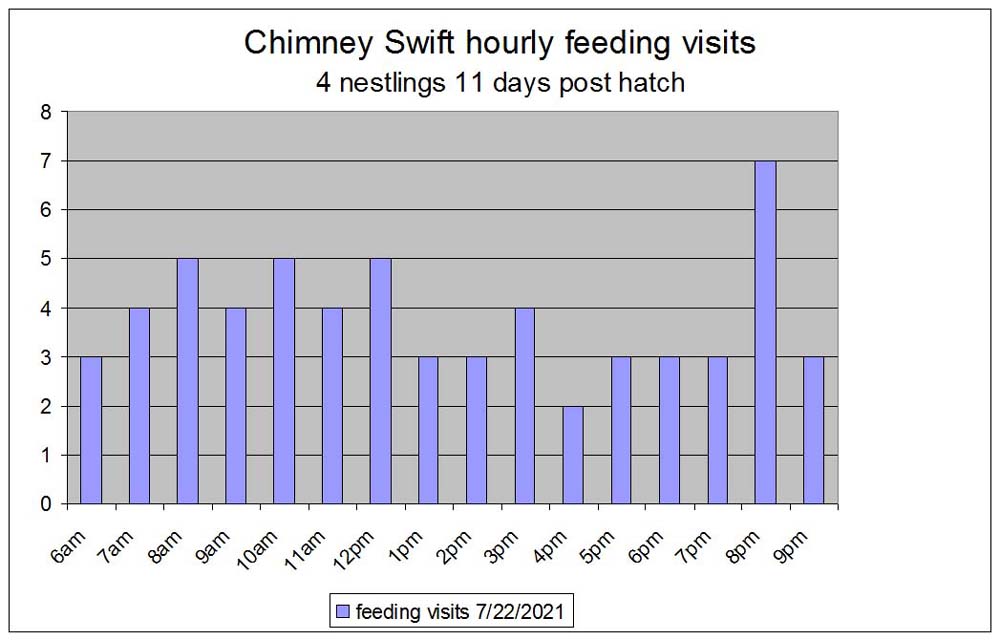
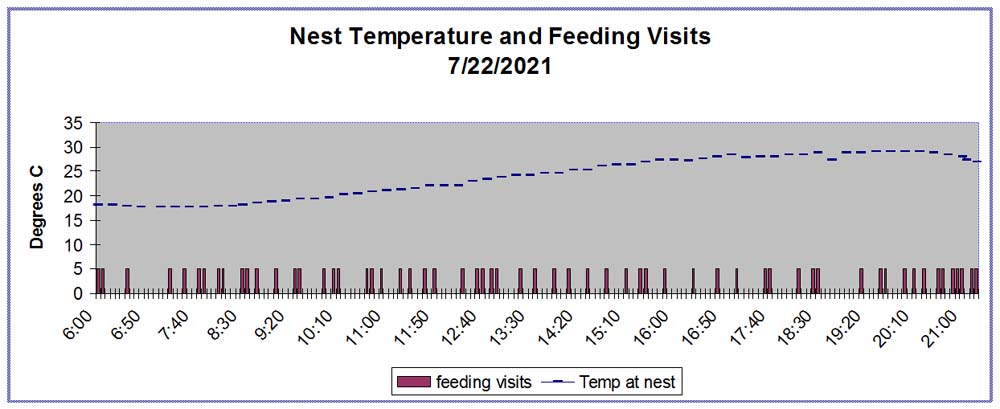
Afternoon feeding visits were typically less frequent than in the morning. And, the greatest number of feeding visits was in the evening. The same was true for the resident purple martins and barn swallows. The swifts were the last to retire to their nests, but all three species usually gathered their last mouthfuls of insects right in the back yard and immediate surroundings at the end of the day. They often circled low at this time, perhaps because that is where the insects were or because the proximity to their nests allowed more frequent feedings. Sometimes I would lie on my back in the grass and watch this end of the day aerial display. Looking straight up, there are no terrestrial reference points to orient myself - only wide open sky. With luck, this can sometimes result in mild vertigo, giving the illusion that I am soaring with the birds. (This is safe while lying flat on your back.) While these three species share the same ecological niche, they have evolved their own characteristic abilities of flight. I would claim the swift to be the superior aerial acrobat, even better than a dragonfly. But, a martin might take exception to my opinion and ask me “How many times have you seen me returning to my gourd with a dragonfly in my mouth?” Point taken – all three species are amazing.
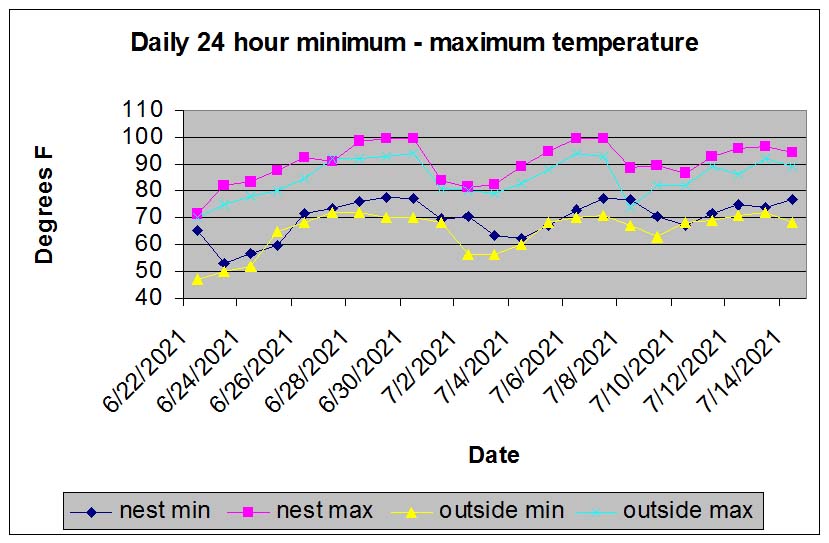
The highest temperature reading at the nest during the entire nesting period was 99.5 F (37.5 C). This seemed to have no effect on the nestlings or adults normal behavior. The amount of night incubation was not recorded since I was unable to see whether the adults were incubating or just clinging to the edge of the nest. The infrared lighting on the camera had burned out years ago. But, I found that by tilting the video monitor and viewing the dim image at an approximately 30 degree angle I could see whether one or both adults were present at the nest. Whether one or both spent the night on the nest was not dependent on the temperature. The outdoor temperature was recorded in the shade of the front yard sycamores and would not accurately reflect the air temperature around or inside the silo. Temperature date collected in 2014, upon completion of the shaft, was always slightly cooler in the shaft than in the silo proper. In a future warming world, the fan at the bottom of the shaft could be used to blow in cooler air from the first floor wood shop.
The nest shaft construction in 2014 and the first chimney video in 2001.
| This year the swifts returned to use their same nest in the silo shaft. This was surprising because the swifts using the house chimney had always built a new nest each year. Of course, their old nests were usually found at the bottom of the chimney at the end of the season so they did not have a choice. Uncapped chimneys have no protection from rain water running down the walls. In contrast, the interior walls of their plywood shaft still look like new after seven years. Rain entering the magical trash can falls straight down even in high wind. The hinged door at the bottom of the shaft does get wet but can easily be replaced if necessary. | |
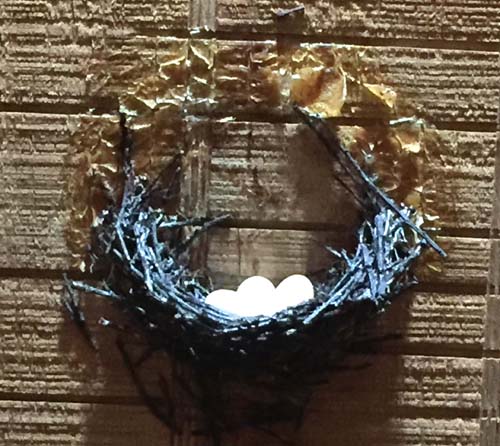 |
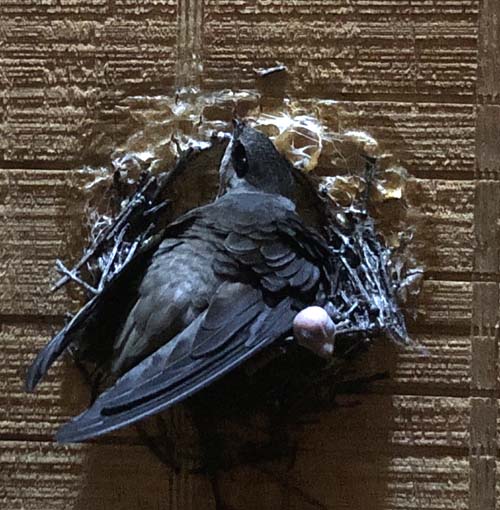 |
| Last year’s nest was reused with hardly any visible addition of sticks. The clutch of four eggs is also the same as last year. | Note the nestling’s head hanging over the cup. Nestlings are not as fragile as they would seem. |
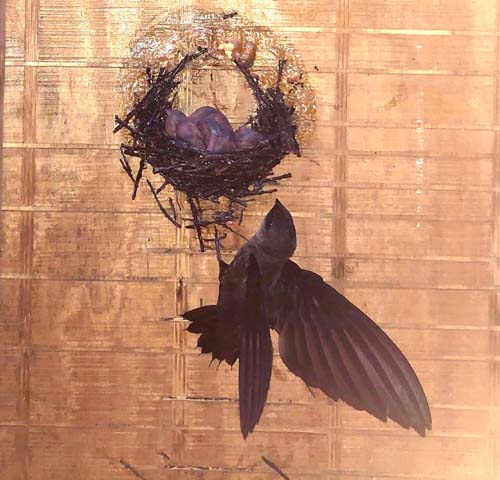 |
 |
| Only three eggs hatched. All photos were taken with a phone, but this one with a flash does not show the leaves that were attached to the saliva semicircle over the nest. | What is the purpose of the leaves carefully pasted onto the saliva crown this year? And, why were they totally absent last year? The nest cup is still completely devoid of anything but sticks. |
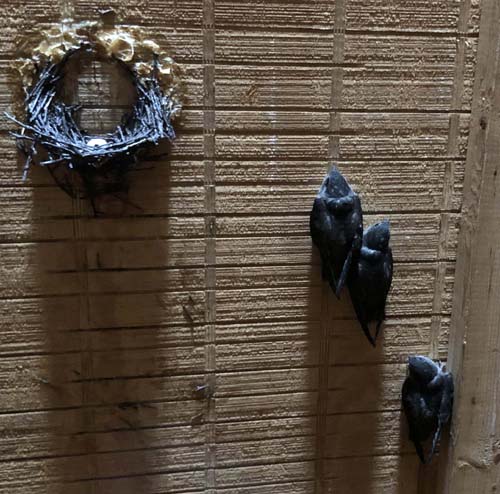 |
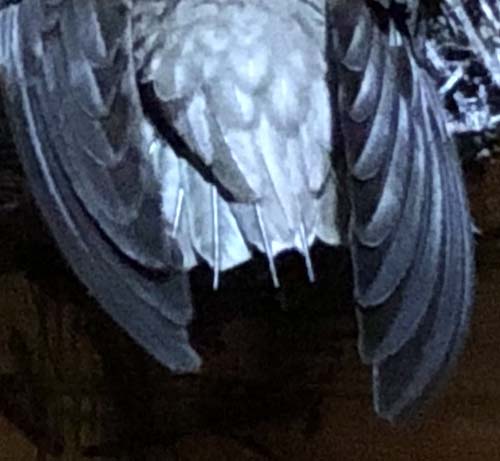 |
| The nestlings gradually worked their way out and away from the nest just as last year. | I still marvel at the beautiful weirdness of the swift. |
| A second pair of swifts again nested in the house chimney this year, but the nest was not monitored. Before the young fledged from either nest, there were often 6 or 7 adults flying about and dropping into the magical trash can or the house chimney. Others would sometimes join in, bringing the total to 11 or 12. Later, when the 3 fledglings were venturing forth from the silo, they may have been joined by fledglings from the chimney nest. But the evening sky was so filled with swifts, martins and barn swallows that an accurate count was impossible. No video of the swift nesting was recorded this year since the two remaining cameras were on the two kestrel nests. Also, I only visited the silo nest 4 times in order to not scare the adult barn owls also nesting in the silo. The return of the barn owls after eight years was the big event this year. | |
| barn owl | American kestrel | purple martin | barn swallow | Eastern bluebird |
| tufted titmouse | Eastern phoebe | yellow shafted flicker | tree swallow | chimney swift |
| house wren | big brown bat | Carolina wren | brown thrasher | catbird |
| cedar waxwing | Northern mockingbird | |||
| Yellow warbler | Acadian flycatcher | |||